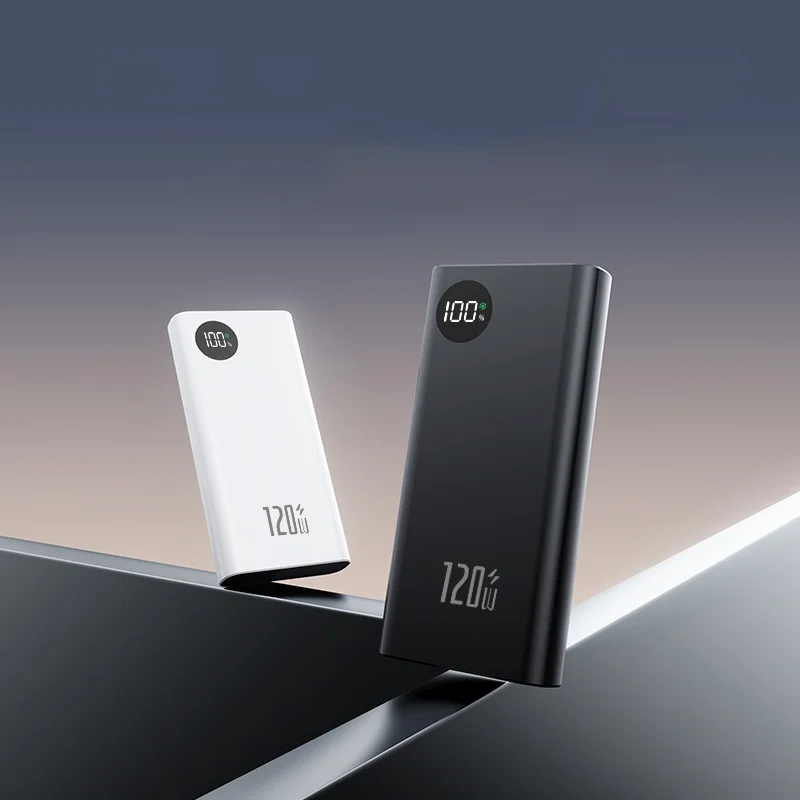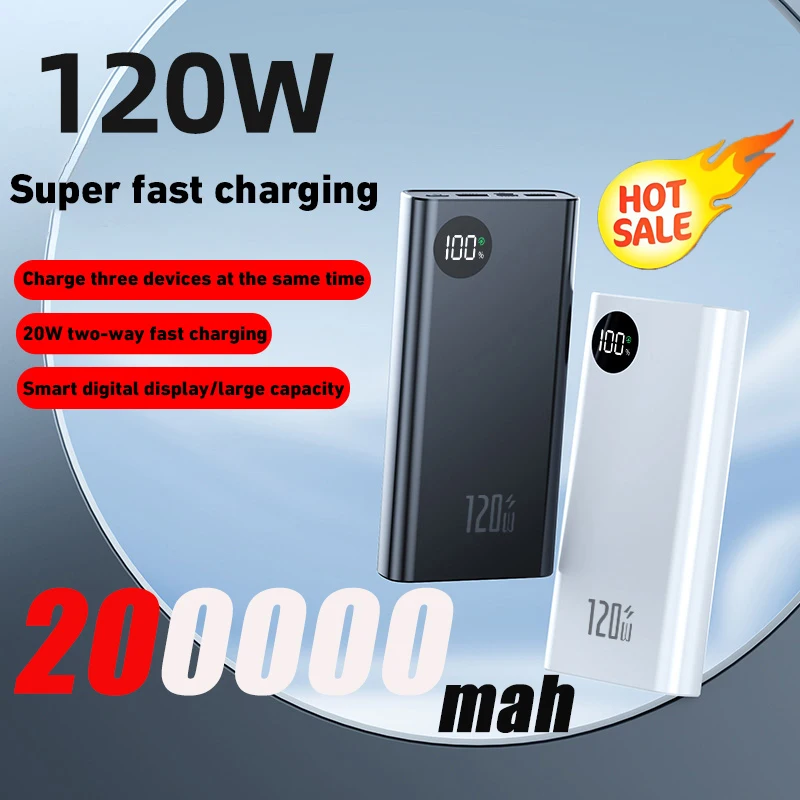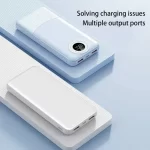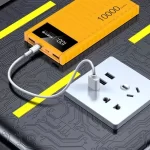Air travel has become an integral part of modern life, connecting people and cultures across vast distances. With the increasing reliance on electronic devices for communication, entertainment, and work during flights, portable chargers, or power banks, have turned into indispensable travel companions. However, the rules surrounding the carriage of power banks on aircraft can be confusing, leading to questions like, “Can I bring a power bank on a plane?” This comprehensive guide delves into the air travel regulations concerning power banks, ensuring your journey is both tech-friendly and compliant.
Understanding Power Banks and Their Significance
The Importance of Portable Power
Power banks have revolutionized the way we use our electronic devices by offering a convenient solution to recharge them on the go. These compact devices store electrical energy in rechargeable batteries, allowing users to top up smartphones, tablets, and even laptops without needing a wall socket. Their portability and versatility make them essential for travelers who rely on staying connected during long flights or layovers.
Why Regulations Exist
Given their battery capacity and chemical composition, power banks pose potential safety risks if not handled correctly. Lithium-ion batteries, commonly used in power banks, can overheat and in rare cases, ignite under certain conditions. Therefore, aviation authorities worldwide have established strict guidelines to minimize these risks and ensure passenger safety.

General Guidelines for Power Banks on Planes
Carry-On Only
One of the most crucial rules to remember is that power banks are allowed on planes but strictly as carry-on luggage. Passengers are prohibited from packing power banks in checked baggage due to the fire risk they pose if they malfunction undetected in the cargo hold. This regulation is universal across airlines and enforced globally.
Capacity Matters: mAh and Voltage Limits
The capacity of a power bank, measured in milliampere-hours (mAh), determines its allowable size on a flight. Most airlines follow the International Civil Aviation Organization’s (ICAO) guidelines, which permit power banks with a capacity of up to 100Wh (Watt-hours) to be carried onboard without special permission. For reference, a 100Wh power bank typically equates to around 27,000mAh. Power banks with capacities between 100Wh and 160Wh require airline approval before being brought aboard. Any power bank exceeding 160Wh is generally forbidden.
Displaying Capacity Information
To facilitate security checks, it’s crucial that your power bank clearly displays its capacity information. If the Wh rating is not explicitly stated, convert the mAh value to Wh using the formula: mAh / 1000 = Wh. Airlines may deny boarding if the power bank’s capacity cannot be verified.
Packaging and Usage During Flight
When packing your power bank in your carry-on, ensure it’s protected against accidental activation and kept in a pocket or compartment separate from metal objects to avoid triggering false alarms at security checkpoints. It’s also advisable to keep power banks partially charged (around 50%) during flights, as fully charged or completely depleted batteries are more prone to overheating.
Regional Variations and Additional Considerations
Country-Specific Regulations
While the ICAO guidelines serve as a global standard, individual countries and airlines may enforce additional or slightly different rules. Always check with your specific airline before flying, as some might have more stringent restrictions based on their own safety assessments or local regulations.
Special Cases: Smart Luggage
Smart luggage equipped with built-in power banks poses a unique challenge. Many airlines now require these batteries to be removable to comply with carry-on regulations. If the battery cannot be detached, the luggage may not be allowed in the cabin or even on the flight.
Traveling Internationally
Crossing international borders with power banks might involve further scrutiny. Some countries have import/export restrictions on lithium-ion batteries. It’s wise to research the destination country’s regulations beforehand to avoid confiscation or delays at customs.
Tips for Safe and Hassle-Free Travel with Power Banks
Stay Informed
Regularly check for updates to airline and airport regulations, as these can change without notice. Websites and social media channels of airlines and aviation authorities are valuable resources.
Label Clearly
Affix a label with your contact details to your power bank in case it gets separated from your luggage during security checks.
Charge Wisely
As mentioned, keeping your power bank at a moderate charge level minimizes safety risks and prolongs its lifespan.
Bring Only What You Need
Carry only necessary power banks to reduce weight and simplify the screening process. Multiple or excessively large power banks may draw unnecessary attention and delays.

Emergency Preparedness with Power Banks
Having a power bank while traveling can be invaluable, especially during unexpected situations such as flight delays or emergencies. Here are some tips on how to make the most of your power bank in these circumstances:
- Keep Your Devices Charged: Prioritize charging devices that serve as communication tools (like smartphones) or those with emergency features (such as a flashlight app). These can be crucial for staying informed and safe.
- Backup Power Source: Consider carrying a small, portable solar panel or a compact USB charging device that can harness alternative energy sources. This can be particularly useful during extended power outages or when stranded in remote areas.
- Knowledge of Your Power Bank: Familiarize yourself with your power bank’s charging time and output capabilities. Knowing how quickly it can recharge your devices and how many full charges it can provide helps you manage your power usage efficiently during an emergency.
- Distribute Charging Needs: If you’re traveling with family or friends, discuss a strategy for sharing the power bank. Distributing charges ensures everyone’s essential devices stay powered, maximizing collective preparedness.
- Emergency Contact Information: Besides labeling your power bank, store emergency contact details and important documents (like insurance policies, passports, and medical records) electronically on your phone or a secure cloud service. Ensure these are accessible even when your device is in low-power mode.
- Apps and Tools: Download and familiarize yourself with apps that can aid in emergencies. These could include maps that work offline, first-aid guides, apps for language barriers, and emergency broadcasting apps to stay updated on local situations.
- Regular Maintenance: Before any trip, check your power bank’s condition and performance. A deteriorating battery not only holds less charge but also poses a higher safety risk. Replace old or damaged power banks to ensure reliability in emergencies.
By integrating these practices into your travel routine, you can transform your power bank from a mere convenience into a vital component of your emergency preparedness kit, ensuring you stay connected and informed no matter where your journey takes you.

Maximizing Battery Life and Efficiency During Travel
To ensure your power bank serves you optimally during your travels, adopt these strategies to maximize battery life and efficiency:
- Optimize Device Settings: Before charging your devices with a power bank, turn off unnecessary features like Bluetooth, Wi-Fi, and location services. Lower screen brightness and enable power-saving or airplane modes to minimize energy consumption.
- Sequential Charging: If you have multiple devices to charge, prioritize them by need and battery size. Charge smaller devices or those with critically low batteries first, as they will require less energy compared to larger devices or those with higher capacity batteries.
- Use Original Cables: Where possible, use the charging cables that came with your devices. Third-party cables can sometimes be less efficient, resulting in longer charging times or even damaging the power bank or your device over time.
- Monitor Charging: Avoid overcharging your devices once they reach full charge. Not only does this waste power, but it can also degrade your device’s battery health in the long run. Use smart chargers or charge management apps that automatically stop charging when the battery is full.
Conclusion
In conclusion, yes, you can bring a power bank on a plane, provided you adhere to the outlined regulations. By understanding the importance of these guidelines and taking proactive measures, you can ensure a smooth and safe journey while enjoying uninterrupted access to your electronic devices. Remember, safety always comes first, and compliance with these rules is key to protecting yourself and others during air travel. Happy and powered travels!


